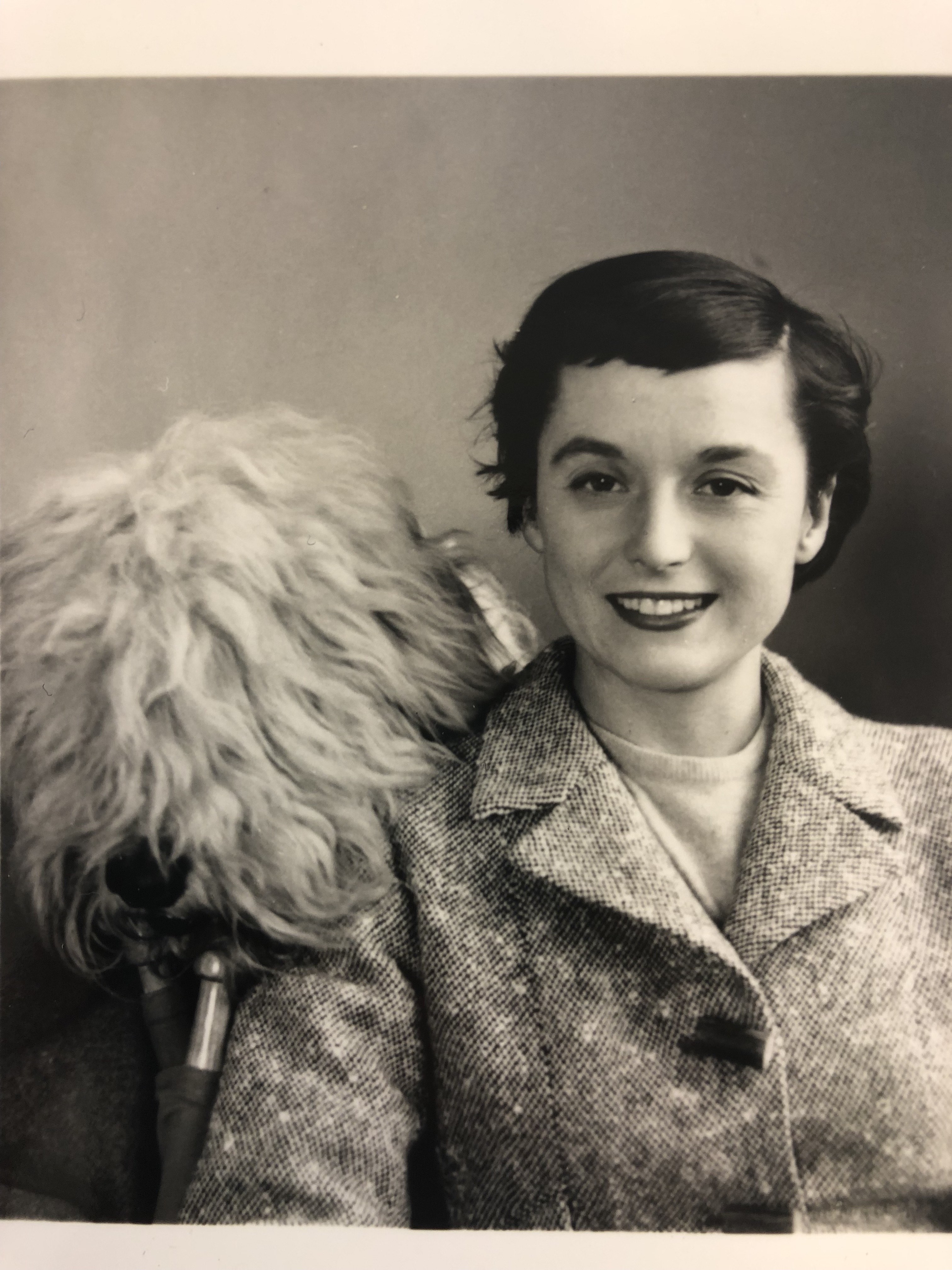Florence Knoll

Florence Knoll with her dog Cartree
Photograph taken ca. 1960
Courtesy of Knoll Archives
Florence Marguerite Schust (1917–2019) grew up at Cranbrook. An orphan, she attended the girls school at Cranbrook that was designed by Eliel Saarinen, the Kingswood School for Girls. She became a close friend to the Saarinen family even going away with them on family vacations in Europe. After Kingswood, Florence attended the Cranbrook Academy of Art where she trained to fulfill her lifelong dream of becoming an architect. Fortuitously, in 1943 Florence was hired by Hans Knoll, whom she soon wed. Her lifelong passion for design would lead her to revolutionize the experience of interior space.
Florence Knoll did not consider herself to be a furniture designer despite the fact that she designed some of the most influential furniture forms of her time. She said, “I am not a furniture designer . . . I never sat down to design furniture, I designed the filler pieces that no one else was working on.” Despite her modesty, she was a force in midcentury modern design. During her career, Florence led one of the most successful departments at Knoll, the Planning Unit. The objective of the Planning Unit was to integrate all activities within a business through interior design. A building’s architecture would be directly connected to the furnishings in order to streamline a company’s function and brand. The Planning Unit won some of the largest and most important corporate interior commissions, including General Motors Technical Center (1956), the CBS building (1959), and dozens of other large scale corporate projects. These commissions were fundamental to Knoll’s success as a national and international furniture manufacturer.
The Planning Unit was Florence Knoll’s brain child. She enabled the department to lead a movement that used mass produced furnishings to create completely customized interiors. Furniture designed for the Planning Unit may have been mass produced but in selection and design the objects were tailored to reflect the needs and personas of each client. For example, when Florence designed her husband’s office, she chose a color palette that would compliment his eyes and skin tone. As technological advances swiftly progressed in the post-World War II corporate interior, Florence Knoll and the Planning Unit used interior design as an agent of synthesis that put the needs of the consumer first.
